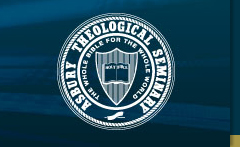Files
Download Full Text (225 KB)
Alternative Title
OT 501 Comprehensive Hebrew I
Summary
1. Bornemann, Robert A Grammar of Biblical Hebrew. Lanham, MD: University Press of America, 1998. Along with the materials created by the instructor, this text will supplement knowledge for the course. We will do some of the exercises from this text as noted below on the "Course Outline." It contains lessons which will help us to know all the essentials of Biblical Hebrew grammar. The text is written in a personal dialogical way. 2. Brown, Francis, S. R. Driver, and Charles A. Briggs. A Hebrew and English Lexicon of the Old Testament. Oxford: Oxford, 1907; reprint, Peabody, MA: Hendrickson, 1979. Even though this dictionary or lexicon was published around the beginning of this century, it still provides the most wealth of information per the expense. You will probably agree its format needs revising. We will learn how to use BDB throughout the course. I have designed worksheets to accomplish this task. 3. Elliger, K., and W. Rudolph. Biblia Hebraica Stuttgartensia. Stuttgart: Deutsche Bibelgesellschaft, 1967-77. Referred to as BHS, this is the Hebrew Bible reproduced from the oldest complete manuscript of the Old Testament,Codex Leningradensis (ca. 1008 A.D.), without significant alteration. 4. Scott, William R. A Simplified Guide to BHS. Berkley, CA: BIBAL, 1987. This is a basic introduction to many of the peculiarities of the Hebrew Bible. Scott provides an English key to the Latin text critical notes (found at the very bottom of a BHS page) which were added by scholars this century who edited BHS and to the Aramaic side marginal notes (a.k.a. "massorah") which were put there by Medieval Jewish rabbis who created the vowel and accent system of the Hebrew Bible. Scott also explains many other features of the Hebrew Bible that will help you to understand how it has been put together through hundreds of years. 5. Chisholm, Robert. From Exegesis to Exposition. Grand Rapids: Baker, 1998. This book is designed to help a person figure out the significance of the Hebrew text and to craft a way to communicate its significance. We will read the portions of the text that relate to word study methodology, syntactical issues, and the narrative/poetry issues of the Hebrew Bible.
Publication Date
January 2000
Publisher
Asbury Theological Seminary
Keywords
Kentucky, OT501, Hebrew, Spring
Language
English

